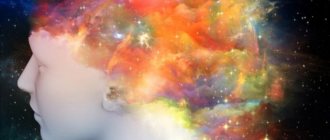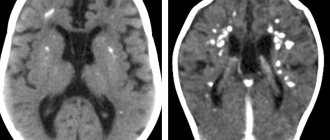Menopausal syndrome
in women it is a whole complex of symptoms that arise during menopause against the background of declining reproductive function.
- Menopausal syndrome
- Symptoms
- Our services
- Our doctors
- Price-list
- Analyzes
- Make an appointment
These symptoms complicate the normal (physiological) course of the menopause due to the following reasons:
- too sharp a decrease in estrogen production,
- mismatch in the functioning of the endocrine system,
- the presence of concomitant diseases and conditions that affect the course of menopause (gynecological diseases and past abortions, autonomic disorders, endocrine pathology, cardiovascular diseases, psychological discomfort, traumatic brain injuries, etc.).
After menopause, climacteric syndrome is observed 1.5-2 times more often than in premenopause. Its typical symptoms are especially common in the first 2-3 years of postmenopause.
Menopausal syndrome, symptoms
During menopause, a woman may experience a number of unpleasant sensations. Symptoms can vary in intensity and be present in different combinations. They are divided into several groups.
Neurovegetative symptoms:
- tides;
- sweating;
- changes in blood pressure;
- chilling;
- nausea, abdominal pain;
- dizziness, headaches;
- heartache;
- palpitations.
Metabolic-endocrine symptoms:
- swelling, weight gain;
- engorgement of the mammary glands, mastopathy;
- flatulence;
- vaginal dryness, spotting, bleeding;
- skin atrophy, itching;
- urinary incontinence, painful urination;
- pain in bones and joints;
- increased blood cholesterol levels.
Psycho-emotional symptoms:
- irritability;
- decreased libido;
- sudden mood changes;
- tearfulness;
- aggressiveness;
- anxiety;
- depression, apathy;
- forgetfulness, deterioration of concentration;
- insomnia;
- inexplicable sensations (tingling, goosebumps, etc.).
Hot flashes during menopause
The most constant and early symptom is hot flashes during menopause - periodically occurring redness of the skin and a feeling of heat in the face, neck, and chest. Hot flashes are often accompanied by sweating, headache, palpitations and insomnia. Based on the number of hot flashes per day, the following forms of menopausal syndrome are distinguished:
- mild - up to 10 hot flashes per day,
- average - 10-20 hot flashes with characteristic symptoms,
- severe - over 20 hot flashes and other pronounced manifestations.
It should be noted that the variety of symptoms of menopausal syndrome is often due to a psychosomatic component, in particular, the anxious attitude of the woman herself to the changes occurring in her body. Therefore, with competent help from a psychotherapist or psychoneurologist, many manifestations of menopause can be mitigated even without medications.
Discharge during menopause
During premenopause, menstruation gradually loses its former regularity: it may occur later or earlier than expected. Their intensity changes - and it can either decrease or increase. Occasional intermenstrual discharge is possible - light, “spotting”, brownish in color.
So-called menopausal bleeding, associated with impaired production of sex hormones, develops in women aged 40-50 years, before menopause. Typically, such bleeding begins after a missed period, but it may coincide with the expected period or even begin a little earlier. It differs from regular menstruation in its long duration - up to several weeks.
The intensity of such bleeding may vary and may be repeated. Sometimes they are quite abundant, even threatening health and life.
Menopausal bleeding requires treatment in a hospital, usually responds to hormone therapy, but surgery may also be required. As a rule, diagnostic curettage is required to clarify the diagnosis in such cases. This is necessary in order not to miss possible hyperplasia (overgrowth) of the endometrium, its polyps and other conditions that are also manifested by uterine bleeding. Treatment tactics will depend on the correct diagnosis.
Uterine bleeding that occurs in postmenopause is much more dangerous, as it often indicates a serious illness. For example, spotting in a woman not receiving hormone replacement therapy that occurs several years after menopause can be caused by uterine cancer or ovarian tumors. In this case, it is necessary to undergo a thorough medical examination as quickly as possible with mandatory separate diagnostic curettage of the mucous membrane of the cervix and body of the uterus. Early diagnosis allows for timely successful treatment.
Menopause in women: symptoms, treatment, age.
Despite the fact that there is currently a persistent trend towards an increase in the average life expectancy of a woman to 70-80 years, the age of menopause remains fairly stable - approximately 48-50 years. This is evidence that the last third of a modern woman’s life is spent in a state of menopause. Sooner or later, every representative of the fair half of humanity has to deal with the symptoms of menopause, and it is very important to be prepared to overcome this next stage in life.
What are the symptoms of menopause in women? Is treatment necessary? How to eat properly? You will find answers to these and other questions below.
What is menopause?
The term "climax" translated from Greek means "step". There is an opinion that this is one of the most difficult stages in a woman’s life, associated with the decline of sexual function and a steady increase in the level of gonadotropins, indicating the onset of menopause.
The concept of menopause combines several periods:
- Premenopause (premenopause) - several years preceding the onset of menopause. During this period, the production of estrogen by the ovaries gradually decreases. Premenopause can occur at the age of 40-45 years, less often - at 30-40 years.
- Menopause is a period of stable cessation of menstruation and intermenstrual cycles (their absence for a year). Menopause is an early menopause that lasts for five years after the cessation of menstruation.
- Postmenopause (late menopause) lasts up to 70-75 years.
- Old age is the period of life after 75 years.
Issues regarding the quality of life of women during menopause are quite acute and relevant. In this case, special attention is paid to the following parameters: physical and mental well-being, social and role functioning, as well as a general objective perception of the state of one’s health.
At what age does menopause occur in women?
- Premature menopause (30-40 years).
- Early menopause (41-45 years).
- Timely menopause (45-55 years).
- Late menopause (after 55 years).
Factors that influence a woman’s body during menopause
- Natural aging processes, accompanied by receptor and mediator changes, death of nerve cells, decreased motor activity, increased cognitive impairment and exacerbation of depressive processes.
- The presence of chronic somatic and neuropsychic diseases that develop during life under the influence of unfavorable environmental factors, as well as due to genetic predisposition. By the age of 45-50, many women are diagnosed with atherosclerosis, obesity, diabetes mellitus, arterial hypertension, degenerative diseases of the musculoskeletal system, as well as possible anxiety disorders and episodes of depression.
- The influence of menopausal hormonal changes on the central and peripheral nervous system. The most characteristic peripheral signs of menopausal syndrome are hot flashes and genitourinary disorders. The main clinical manifestations of the restructuring of the central nervous system include endocrine, metabolic, psycho-vegetative, cognitive and motivational.
- Psychosocial status of a woman. In this case, an important role is played by the financial, domestic and professional situation; the presence or absence of a sexual partner, the departure of adult children from home, disharmony in intimate relationships, and the peculiarities of perceiving oneself as a woman.
Symptoms of menopause in women
Symptom No. 1 - psycho-emotional menopausal syndrome
At the moment, many people who are not directly related to medicine are familiar with terms such as “menopausal neurosis”, “menopausal depression”, “involutional hysteria”. Of course, these psycho-emotional disorders can occur during other periods of a woman’s life, but during menopause they are much more common and, as a rule, are accompanied by more complex somato-vegetative disorders. Women who have entered menopause often experience increased fatigue, loss of interest in themselves and others, unmotivated anxiety, restlessness, suspiciousness, excessive sensitivity, increased vulnerability, fear of impending old age, tearfulness and lability of mood.
Symptom No. 2 - sleep disturbance
Sleep disturbance is one of the most characteristic manifestations of menopause. About 60% of women during menopause complain of an increase in the time it takes to fall asleep, deterioration in sleep quality and frequent awakenings at night. When choosing treatment tactics, the causes of dyssomnia are taken into account. During menopause, they may be associated with central and peripheral nervous disorders. CNS disorders include vascular and toxic-metabolic brain disorders, and emotional disorders (depressive states, increased anxiety, fears).
During sleep, women of menopausal age often experience respiratory disorders (snoring, respiratory arrest) and movement disorders (the so-called “restless legs” syndrome), as well as morning headaches, increased blood pressure and daytime sleepiness.
Disorders of the peripheral nervous system include nocturia (frequent urination at night), nocturnal hot flashes, parasthesia in the hands (numbness, tingling, crawling sensation) and other disorders that occur or worsen at night.
Symptom No. 3 - vegetative and psycho-vegetative disorders
Most often, vegetative permanent or paroxysmal disorders are combined with emotional disorders. Many women complain of discomfort in the left side of the chest, irregular heart rate, increased heart rate, shortness of breath, surges in blood pressure, disorders of the digestive tract, as well as chills or hot flashes. Sometimes it is possible to develop attacks of aggression, fear or anxiety, developing into panic attacks. There are frequent headaches and back pain.
Symptom No. 4 - deterioration in performance
Cognitive impairments during menopause are manifested by deterioration in performance, a decrease in the speed of switching from one type of activity to another, weakening of memory and attention disorders. Most often, this condition is a consequence of emotional problems, that is, it is reversible.
Symptom No. 5 - metabolic and endocrine disorders
Women during menopause often experience a change in eating behavior, an improvement or deterioration in appetite, an increase in body weight, and fluid retention in the body, leading to the formation of edema. Joint pathologies, osteoporosis and cardiovascular diseases become frequent “companions” of postmenopause.
Symptom No. 5 - psychosocial syndrome
Some women who have entered menopause, against the background of dyssomnic, cognitive, psycho-vegetative and sexual disorders, experience difficulties in communication and social adaptation, develop isolation and stress, lack of mutual understanding in the family, and difficulties at work. Of course, all this causes a decrease in the quality of life and can even provoke the development of serious diseases. That is why women who have immature styles of psychological defense and ineffective mechanisms for coping with stress require medical help.
Symptom No. 6 - sexual dysfunction
According to statistics, 50-75% of women during menopause experience a decrease in sexual activity, or rather, a decrease in interest in sex and a decrease in the value assessment of sexual attitudes.
This condition is explained by hormonal changes that occur in the female body during the premenopausal period: fading ovaries produce less estrogens, androgens and progesterone.
Insufficient production of estrogen leads to thinning of the vaginal mucosa, slowing down and decreasing the production of vaginal lubrication, and the development of dyspareunia (pain during sexual intercourse).
A deficiency of free testosterone causes a decrease in libido, and insufficient production of progesterone provokes lethargy, fatigue, headaches and other negative symptoms that significantly reduce interest in sexual contacts.
Menopause in women: treatment
Currently, specialists use several strategies and tactics for managing patients suffering from menopausal syndrome, which is a multidisciplinary problem.
Elimination of unpleasant symptoms
Elimination of individual symptoms of menopause can normalize a woman’s physical condition and restore her quality of life. Thus, to eliminate nocturnal hot flashes and correct night sleep, it is recommended to use clonazepam (an antiparoxysmal drug), and to relieve restless legs syndrome, dopamine receptor antagonists and dehydroxyphenylalanine are prescribed.
With high blood pressure, patients are advised to continuously take AT2 blockers and ACE inhibitors. For elevated blood glucose levels, medications that lower blood sugar are prescribed; for insomnia and neuropsychiatric disorders, sleeping pills and sedatives are prescribed.
Courses of therapeutic exercises, physiotherapeutic procedures, hydrotherapy, massage and sanatorium-resort treatment have proven themselves well as symptomatic therapy.
Hormone replacement therapy
According to experts, the most adequate method of treating menopausal syndrome is hormone replacement therapy. Its prescription is advisable if a woman during menopause begins to have complications such as: cardiovascular pathologies, central obesity, severe osteoprosis, type II diabetes mellitus, etc. It should be emphasized that the prescription of hormonal treatment, which has a number of contraindications, is the prerogative attending physician. The woman is first given a comprehensive diagnostic examination.
Contraindications for hormone replacement therapy:
- Uterine bleeding of unknown etiology;
- Malignant tumors of the female genital organs;
- Mammary cancer;
- Recent stroke or heart attack;
- Thrombophlebitis;
- Severe liver and kidney pathologies;
- Thyroid diseases;
- Preparation for surgery.
Combined hormone replacement therapy drugs contain small doses of progesterone and estrogens. For patients who have undergone uterine amputation, hormone replacement monotherapy (Premarin, Progynova, Hormoplex, Estrofem, etc.) is indicated.
During premenopause, when a woman has not yet finished menstrual bleeding, Clymene, Femoston, Divina, Cycloprogenova, Divitren, Klimonorm are recommended to relieve discomfort and unpleasant sensations and normalize the cycle. Women who no longer menstruate are advised to take Livial or Cliogest.
Treatment of depression during menopause
To relieve psychovegetative syndromes, patients are prescribed the latest generation antidepressants (selective serotonin reuptake inhibitors). This group of drugs includes sertraline, fluoxetine, citalopram, etc.
Note
The use of antidepressants is justified in the presence of severe emotional and affective disorders. However, they can be prescribed in cases where there are contraindications to hormone replacement therapy, as well as if the patient does not want to take hormonal medications.
Psychotherapy for pathological menopause
If during menopause a woman develops a tendency to depressive reactions and an increased level of anxiety, she is prescribed psychotherapeutic treatment in combination with hormone replacement therapy and antidepressants.
The main task of psychotherapeutic correction is to normalize self-perception and reduce stress levels. The patient is prescribed hypnosuggestive psychotherapy, sessions of psychoregulation, relaxation and autogenic training are conducted.
Drugs and vitamins that normalize metabolic processes
At the moment, in the treatment of pathological menopause, vitamin and mineral preparations are widely used, containing active components that help enhance fat and carbohydrate metabolism. These drugs stimulate the work of the ovaries, and also, due to the presence of calcium and vitamin D, prevent the development of osteoporosis.
The most important vitamins during menopause are B vitamins, ascorbic and folic acid, vitamin A, D and E.
B vitamins help improve energy balance, normalize the functioning of the central nervous system and PNS and stimulate the production of estrogen by the adrenal glands. In combination with vitamin C, magnesium and zinc, this group of biologically active substances is involved in the formation of active compounds that regulate hormonal balance and ease the course of menopause.
Tocopherol (vitamin E) improves the functioning of the female reproductive organs, in combination with vitamin C, relieves hot flashes, reduces vaginal dryness and breast swelling, reduces weakness and irritability.
Calciferol (vitamin D) is involved in the absorption of calcium, promotes its deposition in bone tissue and prevents the development of osteoporosis.
Diet to help you survive menopause
Even in ancient times, Eastern healers argued that there was a close connection between the physiological and pathological processes occurring in the body and the environment. Based on this, a clear conclusion was made: to alleviate the symptoms of menopause, it is necessary to adjust the diet, and then menopause will not be a tragedy, but a velvet season in a woman’s life.
Even with an increase in body weight, you should abandon grueling diets, as this can provoke the development of metabolic disorders and lead to depletion of energy reserves. But, at the same time, we should not forget that with age, the body’s need for calories gradually decreases. After fifty years, the daily caloric intake of food consumed should not exceed 2000-2100 calories.
During menopause, it would be wiser to avoid excessive consumption of tea and coffee, which interfere with the absorption of magnesium and calcium, which are essential components involved in the formation of bone tissue. You should also limit your consumption of sweets, sources of fast carbohydrates, and salty foods that promote increased excretion of calcium from the body. Also, in order to avoid the development of atherosclerosis, it would be wiser to avoid consuming fatty meat, mayonnaise, trans fats and sausages.
Products useful during menopause
- Whole grain bread (source of magnesium, B vitamins and dietary fiber);
- Soy products (source of dietary fiber and phytoestrogens);
- Lean meat (source of protein and iron);
- Low-fat fermented milk products (source of calcium and vitamin D);
- Vegetable oil (source of polyunsaturated fatty acids);
- Fatty sea fish (source of Omega-3 fatty acids);
- Fresh fruits and vegetables (source of β-carotene, dietary fiber, folic and nicotinic acid, vitamins A, C, K).
Physiological aging of the female body is an irreversible process that causes ambiguous attitudes towards itself. Some women perceive it calmly and contemplatively, and live taking into account the changes occurring in the body, while others resist reality, not wanting to change their usual foundations. However, in both cases, you can live a full, vibrant life, continue to work and strengthen family values.
Changes in the mammary glands during menopause
The hormonal changes that occur in a woman’s body during menopause, of course, also affect the condition of the mammary glands. Many women experience painful tension (“engorgement”), especially in the area around the nipples. Sometimes in the thickness of the glands, palpable small painful nodules either disappear or reappear.
This is not necessarily breast cancer, and yet with such manifestations it is necessary to see a doctor. Only a thorough examination, including mammography and other examination methods, will help determine whether these formations are tumorous.
Treatment of panic disorder
Antidepressants and tranquilizers are widely used as medications in treatment. Psychotherapy is a successfully used method of treating panic disorder, in particular, cognitive behavioral therapy: psychoanalysis, which helps to become aware of repressed psychological stimuli; special programs aimed at eliminating anxious thoughts of an obsessive nature, such as the “thought stopping method”.
The disease has its peaks and valleys, many patients recover almost completely, while others continue to have recurrent symptoms. With adequate treatment, patients can sufficiently adapt to social life.
Urinary incontinence during menopause
Urinary incontinence is a fairly common manifestation of menopausal syndrome. The fact is that the work of the bladder, urethra and the tone of the pelvic floor muscles depend on the level of estrogen in the body. And their deficiency can lead to weakening of the muscles responsible for urinary control. The following violations may occur:
- stress urinary incontinence - involuntary leakage of a small amount of urine during sudden movements, jumping, lifting heavy objects, coughing, sneezing, laughing;
- Urgent (induced) urinary incontinence, in which the muscles of the bladder contract untimely, which causes the involuntary release of a large amount of urine (an irresistible urge is felt, the woman simply does not have time to run to the toilet);
- pain, burning when urinating;
- frequent urination, the need to urinate even several times a night.
We must also not forget that the cause of urinary dysfunction in women in adulthood can be not only menopause itself, but also urinary tract infections. Age-related weakening of the sphincters contributes to their occurrence. The condition of the urinary tract can also be affected by concomitant diseases, such as diabetes mellitus, cerebrovascular accidents and many other factors.
Urinary problems should not be accepted as an inevitable part of aging. You should not hesitate to discuss this problem with a gynecologist and urologist, and also undergo a detailed examination of the pelvic region and urinary system. Specialists will help you find out the true causes of problems and suggest ways to solve them.
Typically, for urinary incontinence, the following are recommended:
- strengthening the pelvic muscles using Kegel exercises, which are based on prolonged contraction and subsequent relaxation of the pelvic floor muscles;
- “training” of the urinary tract using special simulators;
- limiting caffeine consumption;
- fight against excess weight;
- biofeedback method, electrical stimulation of the pelvic muscles;
- drug therapy, local use of hormones;
- surgical intervention.
Medications to help with anxiety
Let’s make a reservation right away: any medications must be prescribed by a doctor. Only a specialist who knows your individual characteristics and situation can recommend an effective remedy that will not only not harm, but will also help. If your doctor decides that the main factor causing your anxiety is low estrogen and progesterone levels, he or she may recommend hormone replacement therapy. In addition, when anxiety reaches a critical level, antidepressants are often prescribed. However, this choice requires special caution: anxiety and depression are still different problems.
23% of women suffer from anxiety disorders, which are not necessarily associated with depression.
In addition, antidepressants have many side effects. One of them is decreased libido. And a disturbed sex life is perhaps not the best way to combat anxiety.
It makes sense, together with your doctor, to choose a mild sedative that will support you in the fight for a more equal emotional state.









